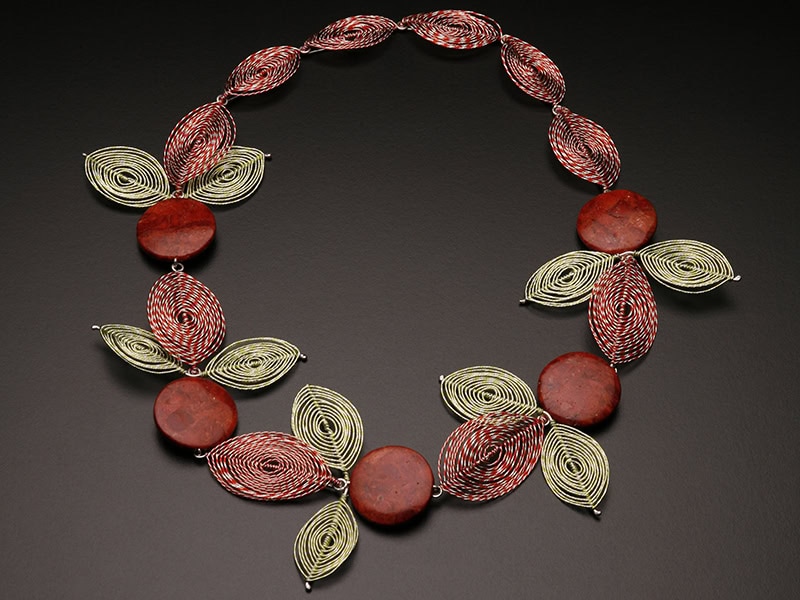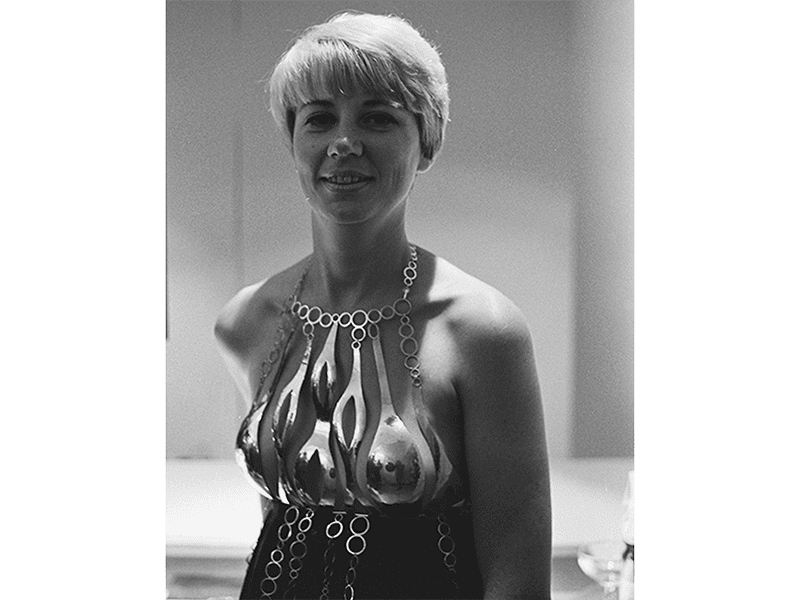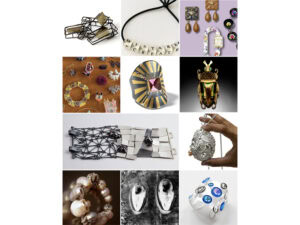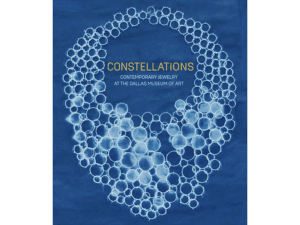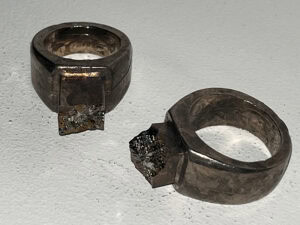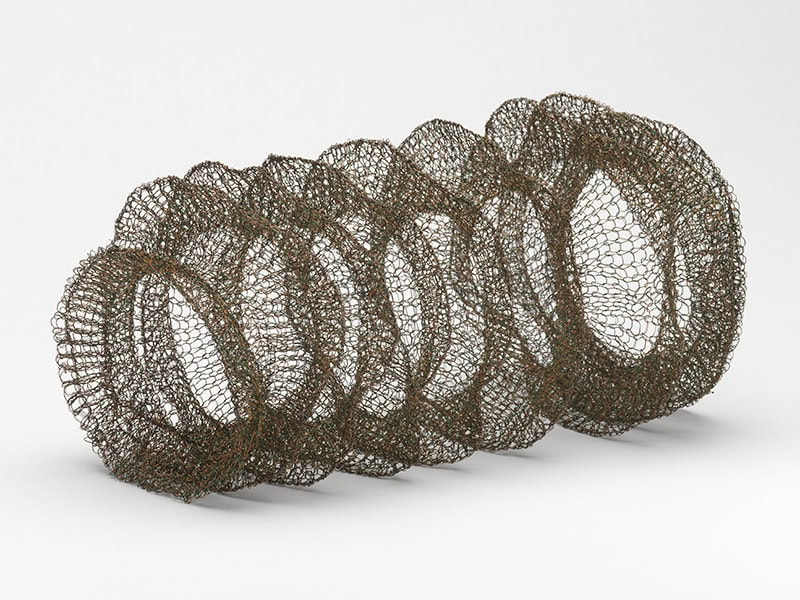
Arline Fisch is best known for combining textile techniques into jewelry. This fusion came about serendipitously. She had been making jewelry but began working with textiles in a serious way after Skidmore College asked her to take on their weaving program. (They had no opening to teach jewelry.) A subsequent trip to Peru opened her mind to the possibilities of combining the two technologies.[1]
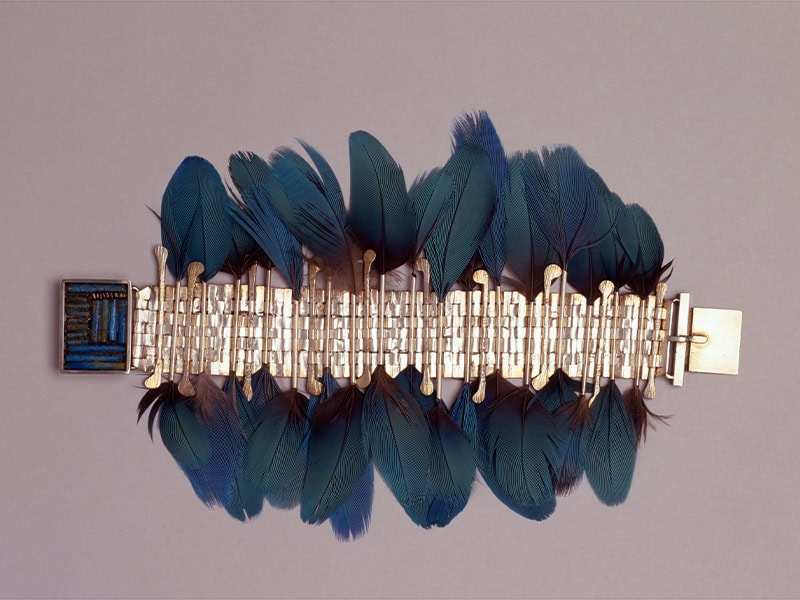
Among her accomplishments:
- One of the founders of the Society of North American Goldsmiths, 1969, and its president 1982–1985
- Started the jewelry and metalsmithing program at San Diego State University, and taught there 1961–2000
- Solo exhibition Jewelry by Arline Fisch, Museum of Contemporary Crafts, New York City, NY, September 28–November 3, 1968
- Vice president of the World Crafts Council, 1976–1981
- Fellow of the American Crafts Council, 1979
- Trustee of the American Craft Council, 1994–2000
- Gold Medal, American Craft Council, 2001
- Board of Trustees, Haystack Mountain School of Crafts, 1973–1982; 1991–2000
- Living Treasure of California, 1985
- Lifetime Achievement Award, National Museum of Women in the Arts
- Distinguished Educator’s Award and Masters of the Medium (Metal/Jewelry), both from the James Renwick Alliance
- Numerous Fulbright Grants and National Endowment for the Arts Grants
- Collections of the Renwick Gallery at the Smithsonian Institution; Museum of Arts and Design; Museum of Fine Art, Boston; the V&A; National Museum of Modern Art, Kyoto, Japan; Vatican Museum, Rome; Kunstindustrimuseet, Oslo, Norway; Royal Scottish Museum; and Racine Art Museum, among others
- Author of Textile Techniques in Metal and Crocheted Wire Jewelry
- AJF member, 2016–2022
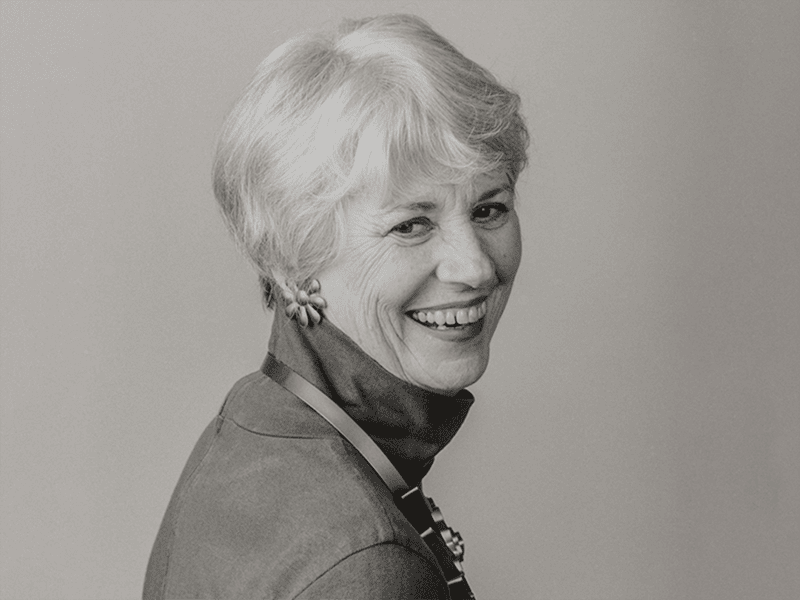
When someone you have known for many years leaves this realm, it is as though a note from a beautiful song is lost, the best word in a tender poem is no longer remembered, a magnificent painting has gone missing, leaving only its golden frame.
It is said “time heals all things,” and this is quite true for those of us who are generous enough to ourselves to allow this to happen, however difficult it may be.
The difficulty: Youth has time for this to take place, but for those who are older, time may be too short. When we lose someone we love or care greatly about, time-healing can feel like eternity. Eventually, if we’re lucky, we remember just the best times, not the grieving. Even then sorrow creeps in. This, perhaps, is as it should be.
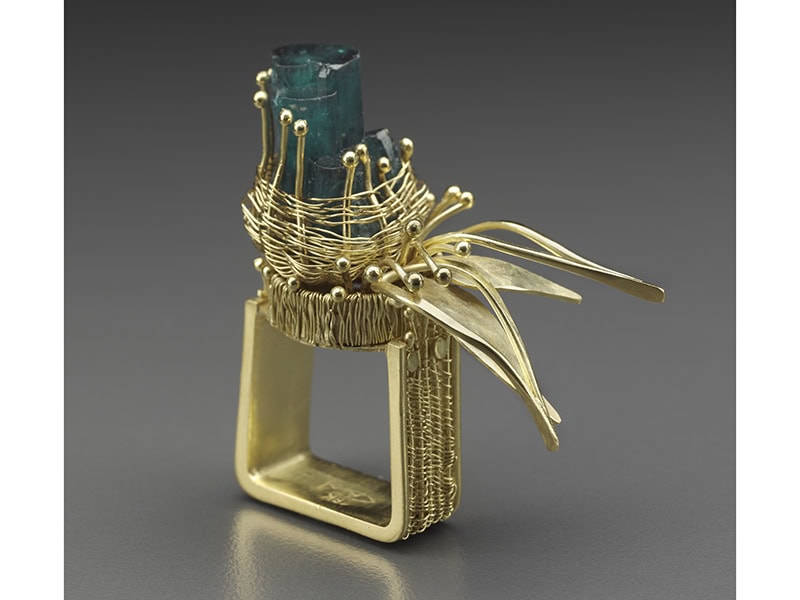
Arline Fisch and I got together on what proved to be one of her last trips to New York. We sat opposite one another at a small white table, having a coffee and dessert during an art event in the Armory. One of us asked the other, once again, when and where did we first meet? We had asked each other that question numerous times over the decades. There had always been some discrepancy in both our memories about the when and where. It didn’t really matter, but after so many years, suddenly, seemingly out of the blue, I remembered.
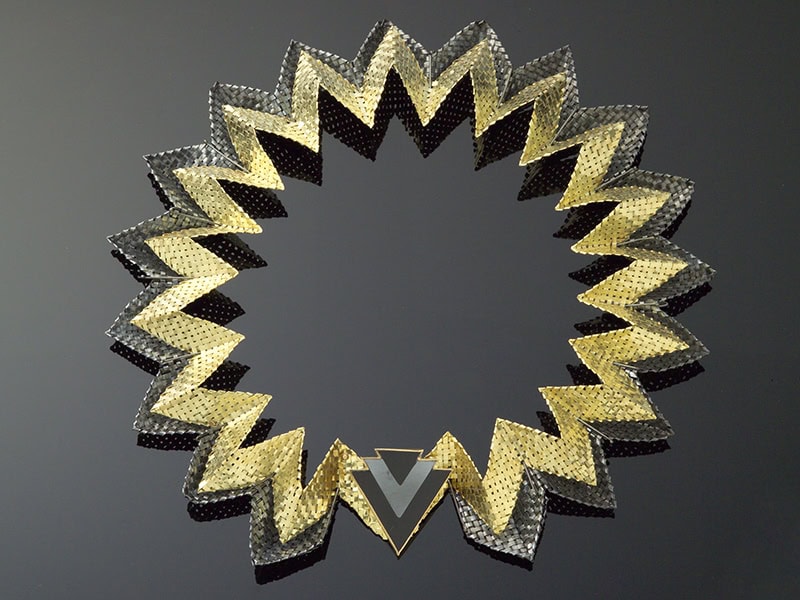
We originally met at the old Haystack location in Liberty, ME, US. We were both students taking a class with Jack Lenore Larsen. At that time, Arline was weaving a tapestry necklace. She had come to study with Larson because she wanted to weave its form in a specific shape. She had attempted several times on a traditional loom, which seemed quite logical, but it wasn’t working. She knew there was likely a better way. The solution: Finishing nails hammered only partway into the wood of a wide pine board in the exact shape of the inside and outside of the necklace, to act as an anchor for the warp. It looked as if it were a double arcade of columns designed by Gian Lorenzo Bernini. Seven decades later, I can still visualize that wide pine board with its interior and exterior colonnades of shiny steel finishing nails.
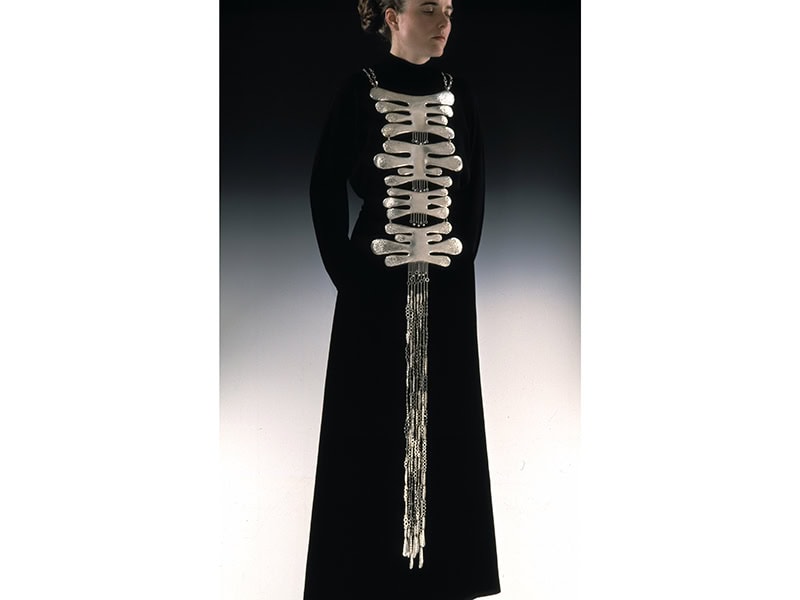
I was much impressed with her idea of sewing on metal plates of sterling silver, pierced with negative shapes through which you could see the tapestry colors. Arline had seen metal sewn onto textile accomplished by ancient cultures. However, she was giving this idea a completely new, and very contemporary, interpretation.
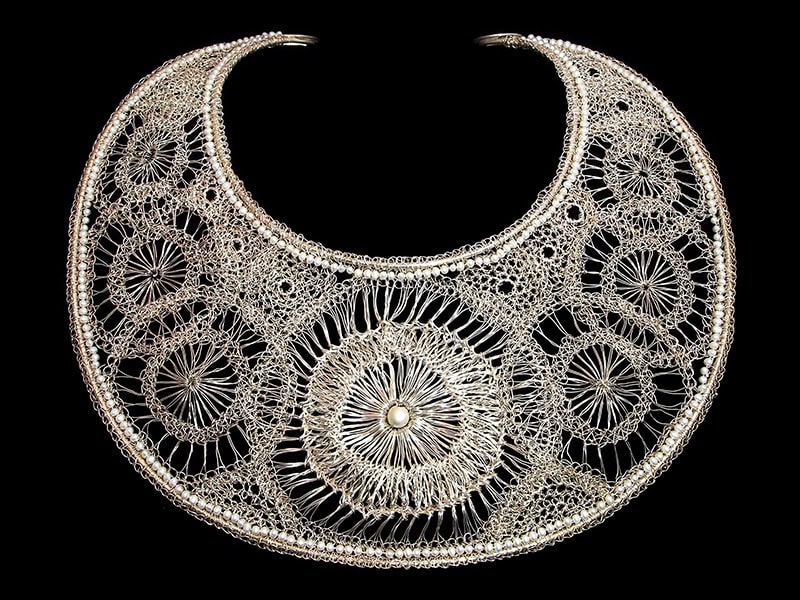
Arline was already a known jeweler when we met. I had not yet taken my first jewelry class. That came two years later, in my senior year. Three years after that, I moved to Manhattan with very limited skills beyond the basics of metalworking. Whenever I needed an answer to a technical question or a source for material related to metal, I would phone Arline, in San Diego. She always knew either the answer or where to look for it. She was not only an accomplished jeweler, she was an excellent teacher who was always more than willing to help. She was extremely generous with her time and knowledge, the kind of intense multilayered knowledge that accumulates when you teach.
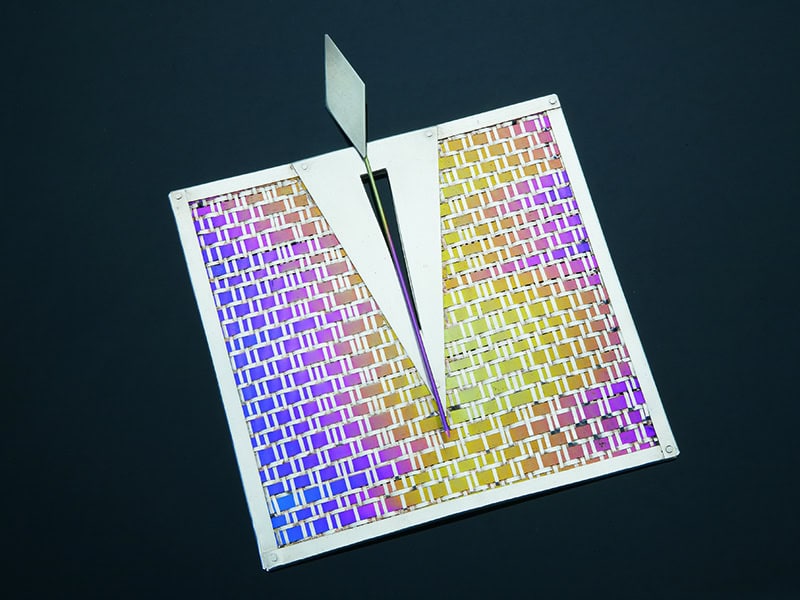
Arline was a colorist. In her early years, color resided in textiles that accompanied metal. In her later work, color was part of the metal itself—the casing colors on the copper wire she used to knit pieces, and in the intense colors made capable when anodizing aluminum. She enjoyed strong, dense, fully saturated color, and was particularly fond of purples and reds. That is how I think of her, but her color range was much wider, incorporating bright greens and turquoise. She eschewed black. I cannot remember her ever using black in her work, nor wearing black.
She dressed wonderfully in mostly the same palette as her jewelry. Her clothing choices enhanced her jewelry, which she always wore. It was part of her look, and part of her charm. More than one person who was wearing a piece of hers commented—smiling at the pleasant telling of the episode—that “Arline was wearing it” and they liked it so much they purchased it right then and there. Arline’s hair was a gentle blond color, always beautifully cut in soft geometric styles. This highlighted the intense colors of her jewelry, which she always wore so elegantly.
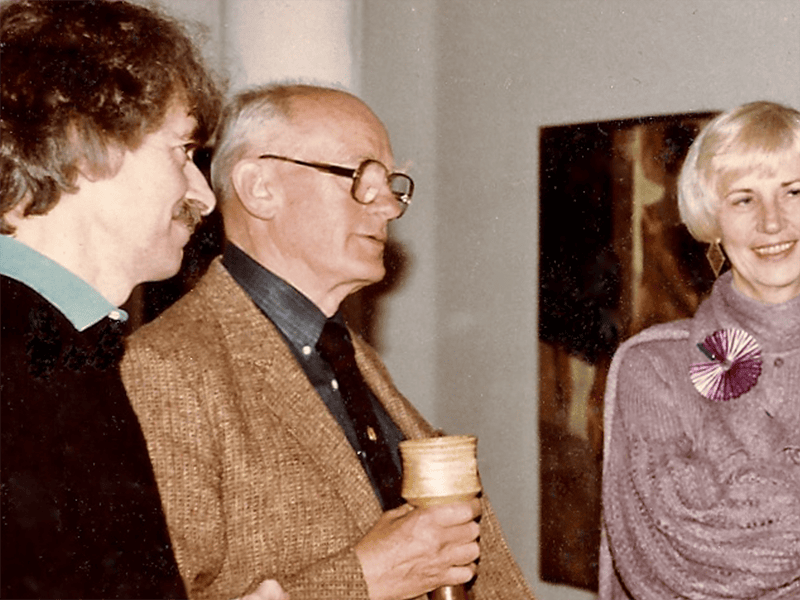
I never made it to San Diego to visit, but Arline would come to New York fairly frequently. After all, she was Brooklyn-born. She would write that she was going to be in New York or phone me when she arrived, and we would get together, usually at some event we were both planning to attend.

Our very long friendship was like the 88 keys on a piano. The highest note, C8, represents the East Coast, and the lowest, A0, represents the West Coast. Some individuals can hear neither of those extreme notes when they are played, but our friendship was loud and clear. It was the perfect center Middle C note, one that sounded for almost 70 years.
I shall miss her. I already do.
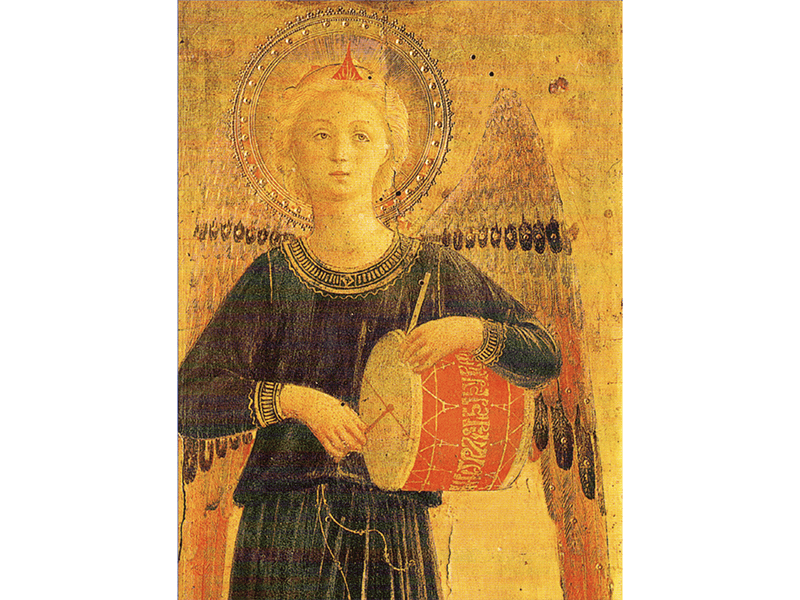
[1] https://artjewelryforum.org/articles/arline-fisch-hanging-gardens/.
We welcome your comments on our publishing, and will publish letters that engage with our articles in a thoughtful and polite manner. Please submit letters to the editor electronically; do so here.
© 2024 Art Jewelry Forum. All rights reserved. Content may not be reproduced in whole or in part without permission. For reprint permission, contact info (at) artjewelryforum (dot) org
